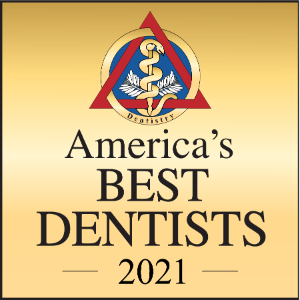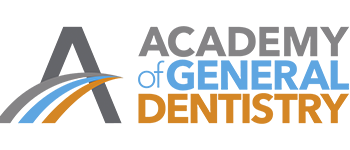Effective management of dental emergencies depends on recognizing their seriousness and knowing the avenues for immediate care. These critical situations require a different response than regular dental concerns and prompt decisions are essential in addressing them.
Identifying what qualifies as a dental emergency is key. For example, severe pain, significant bleeding, or a tooth knocked out in an injury demands immediate attention. These are clear signals that the situation is urgent and requires swift, professional intervention to prevent lasting damage or worsening of the condition.
Understanding where to seek emergency care is critical. Patients must be aware of dental clinics that offer emergency services or hospitals with dental departments equipped for such scenarios. This knowledge ensures that in the event of an emergency, individuals can quickly find and receive the specialized treatment they need.
Timing is important when faced with a dental emergency. Knowing the severity of the issue and where to get help should lead to immediate action. Quick response not only alleviates pain but also plays a crucial role in preventing complications that could lead to more intensive treatments or irreversible harm to one’s dental health.
Identifying True Dental Emergencies
Discerning actual dental emergencies from less critical issues is essential to ensure appropriate and timely care is sought. True dental emergencies are characterized by symptoms that require immediate attention to prevent severe and lasting harm to one’s oral health.
True dental emergencies manifest in various forms that signal the need for urgent care. Patients experiencing intense and unrelenting toothaches or facial swelling indicative of infection should seek immediate professional evaluation. Physical trauma, such as injuries resulting in uncontrolled bleeding, or the sudden loss of a tooth, also merits swift emergency treatment. These are acute scenarios where delays in receiving care could lead to complex health issues or irreversible dental damage.
In contrast, minor dental concerns don’t require emergency intervention and can be managed with regular dental care. Situations like a lost filling or a chipped veneer, although inconvenient, typically don’t demand immediate attention and can be effectively treated during a scheduled dental visit, without jeopardizing one’s long-term oral health or comfort.
Distinguishing between these two scenarios allows patients and caregivers to allocate healthcare resources effectively and prioritize treatment based on the severity of the condition, ultimately contributing to better health outcomes and efficient use of medical services.
Knowing Where to Go for Care
Securing proper care during a dental emergency involves understanding the healthcare landscape and recognizing the most suitable facilities for dental crises. This distinction is crucial for obtaining effective treatment and avoiding unnecessary delays.
Emergency rooms (ERs) act as a universal first point of contact for all emergencies, including those related to dental care. They offer essential services, such as reducing severe pain or controlling bleeding. However, ERs may not have the capacity for specific dental procedures. Thus, while they provide immediate pain relief, ERs typically act as a bridge, referring patients to specialized dental services for comprehensive treatments.
Emergency dental clinics specialize in oral health crises. These facilities are equipped to perform complex procedures such as tooth extractions and root canal therapy rapidly and efficiently. Awareness of the nearest emergency dental clinics and their service capabilities forms a fundamental part of an individual’s emergency response plan:
- Emergency Rooms: Universal access for immediate pain relief and bleeding control
- Dental Clinics: Specialized facilities equipped for complex dental procedures
- Service Capabilities: Understanding what each facility can and cannot provide
- Response Planning: Knowing your options before an emergency occurs
When dental disasters strike, patients must promptly decide on the most appropriate route for treatment. Recognizing whether to head straight to an emergency dental clinic for specialized care or to the ER for initial pain management can make a significant difference in outcomes.
Follow-Up Care: Completing Your Recovery
Comprehensive recovery from a dental emergency isn’t just about immediate treatment but also involves diligent aftercare. To safeguard long-term oral health and circumvent additional issues, patients must understand the importance of follow-up care.
Initial emergency treatment often addresses the immediate crisis, yet it’s usually the first step in a series of necessary interventions. Ensuring healing and preventing the recurrence of dental problems may require additional visits for procedures such as dental restorations or further inspections to monitor progress. These subsequent appointments are crucial in a complete recovery plan, as they allow the dentist to provide proactive care and adjustments to the treatment plan if needed.
Following the dentist’s aftercare instructions is essential to avoid complications. It may involve taking prescribed medications to stave off infections, adhering to specific dietary guidelines to prevent further damage, or avoiding strenuous activities that might jeopardize healing. Compliance with these instructions is a patient’s responsibility that directly influences the speed and success of their recovery journey.
Keeping follow-up appointments enables the dental professional to track the patient’s recovery and catch any potential setbacks promptly. It’s an essential aspect of the aftercare regimen that ensures patients are healing correctly and remain on course for a full recovery, thereby minimizing the risk of future dental emergencies.
Immediate Care Strategies
Effective response to dental emergencies depends on the delivery of immediate and strategic care. Response measures should aim to rapidly stabilize the patient’s condition, providing initial relief and paving the way for subsequent, more comprehensive treatment.
A critical aspect of immediate care is the alleviation of severe discomfort. This may include administering painkillers, applying cold compresses, or performing nerve blocks. Pain relief isn’t only about comfort; it also helps reduce the patient’s stress and facilitates a clearer evaluation of the injury or infection. Immediate management of bleeding, through pressure application or surgical interventions, also constitutes an urgent component of emergency treatment.
Controlling infections at the outset of dental emergencies prevents the spread and further complications. Treatments may include drainage of abscesses or the prescribing of antibiotics. Such preemptive actions are instrumental in safeguarding the patient from more serious systemic effects that could arise from unmanaged infections:
- Pain Management: Immediate relief reduces stress and enables proper evaluation
- Bleeding Control: Pressure application and surgical interventions prevent blood loss
- Infection Prevention: Early treatment prevents spread and systemic complications
- Specialized Equipment: Emergency dental clinics offer tailored tools and expertise
The role of emergency dental clinics in these immediate care strategies is essential. Unlike general healthcare facilities, they are equipped with the tools and expertise tailored to urgent dental needs.
Assessing Emergency Urgency
Appropriate response to dental issues relies on accurately assessing their urgency. Making this assessment requires understanding the specific factors that contribute to a situation’s severity and knowing the right setting for treatment, whether it be an emergency room or dental clinic.
One important consideration is the level of pain and swelling experienced, which can indicate the severity of the condition. Excruciating pain or significant swelling, especially when it impacts one’s ability to breathe properly, requires a rapid visit to the emergency room (ER). The ER is equipped to manage such acute symptoms promptly, ensuring that immediate life-saving measures can be taken.
Another factor to evaluate is the nature of the dental injury. Serious injuries like avulsed (knocked-out) teeth, lacerations to the mouth, or broken jaws are explicitly time-sensitive and require urgent care. Deciding quickly is important as these injuries can have long-lasting effects on dental and overall health. Rapid treatment can prevent complications and improve the prognosis for healing and recovery.
Signs of dental infection, such as abscesses, need urgent attention. An untreated infection can quickly escalate into more serious health issues, making it essential to seek immediate care. Here, the dentist plays a crucial role; with their expertise, they can assess the symptoms and expedite the necessary emergency treatment.
After-Hours Support When You Need It
Adequate preparation and knowing where to turn for advice during a dental emergency are important. Access to after-hours dental support can provide much-needed guidance and reduce the anxiety associated with such unexpected situations.
One key aspect of after-hours support is the availability of emergency contact lines. Dental practices like Dr. Bethaney B. Brenner DDS extend their service beyond regular office hours, offering patients a direct line to professional help. This can be of immense value when an emergency arises in the evenings or on weekends, allowing for an immediate assessment of the situation and recommendations for the next steps.
Proactive planning is another critical element of leveraging after-hours support. Patients are encouraged to familiarize themselves with these emergency protocols ahead of time. By preparing an emergency response plan that includes details such as contact numbers and available services, patients can respond more effectively under stress.
The reassurance provided by having access to professional advice cannot be overstated. In moments of crisis, knowing that expert guidance is just a phone call away offers psychological comfort. This support not only aids patients in navigating the emergency but also helps in maintaining composure, which is essential in handling the situation effectively.
Prevention: Your Best Emergency Strategy
Ensuring strong dental health entails more than just treatment—it requires a proactive approach to prevent emergencies. An effective prevention strategy includes routine care, timely dental visits, and preparation for accidents.
Routine oral hygiene is the foundation of dental health. Daily brushing and flossing remove plaque, preventing decay and gum disease, which are precursors to severe dental pain and emergencies. Additionally, using products like fluoride toothpaste and antiseptic mouthwash can help strengthen teeth and combat bacteria.
Regular dental checkups are just as crucial for early detection and intervention. Dentists can identify and address potential issues before they escalate into emergencies. For example, treating a cavity promptly can prevent painful abscesses, whereas ignoring it could result in a need for emergency care:
- Daily Hygiene: Brushing and flossing prevent decay and gum disease emergencies
- Regular Checkups: Early detection prevents minor issues from becoming urgent
- Protective Equipment: Mouthguards during sports prevent traumatic injuries
- Emergency Kit: Having supplies ready enables effective immediate response
Preparation is key to reducing the effects of dental trauma. Wearing mouthguards during sports activities can protect against tooth fractures or loss, and keeping a dental first-aid kit ensures one is ready to respond effectively if injury occurs.
Your Emergency Preparedness Plan
In dental emergencies, the effectiveness of the response can significantly influence the overall outcome. Preparedness, accurate assessment, and informed action form the foundation of successful emergency management.
The ability to discern between urgent and non-urgent dental issues is the first critical step. Understanding the severity and immediacy of symptoms enables individuals to decide whether an issue requires a rush to the emergency room or can wait for a scheduled dental appointment. For example, a toothache caused by popcorn stuck between teeth may be uncomfortable but isn’t as urgent as a tooth knocked out during a soccer game. Choosing the right professional setting for care depending on the emergency’s nature is the second step, involving knowledge of local healthcare facilities and their capabilities.
At Dr. Bethaney Brenner’s practice in Burlington, CT, we understand that dental emergencies can happen at any time, and knowing where to go and what to expect can make all the difference in preserving your oral health and achieving the best possible outcomes. Taking advantage of support resources ensures proper follow-through and stable recovery, with access to emergency contact lines or online guidance providing crucial direction on immediate steps, reducing anxiety and leading to better decision-making.
Ready to develop a comprehensive emergency preparedness plan and ensure you know exactly where to go and what to expect during a dental crisis? Contact Dr. Bethaney Brenner’s practice today to learn how our emergency care protocols, after-hours support, and comprehensive follow-up services can help you navigate any dental emergency with confidence while protecting your oral health and achieving optimal recovery outcomes.







